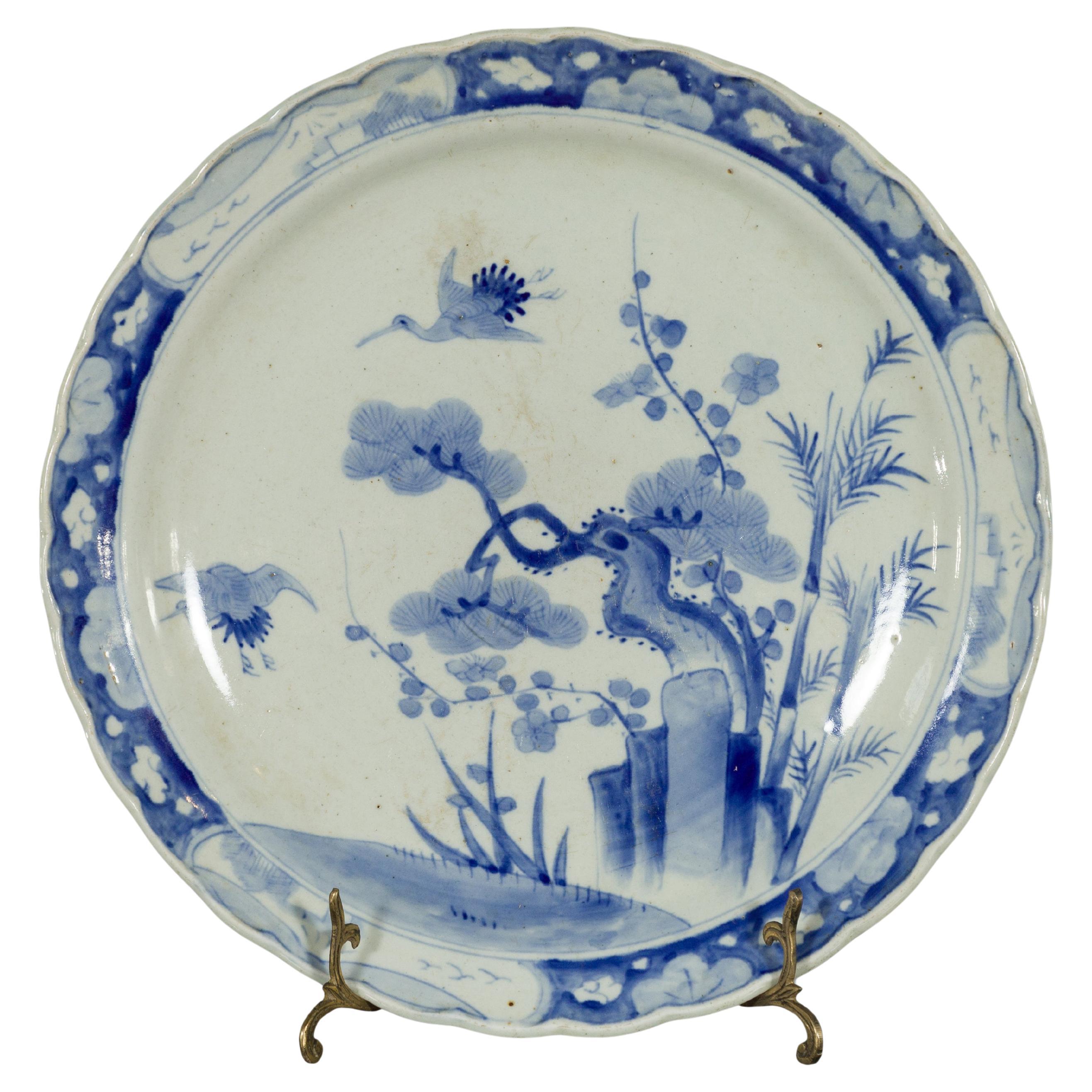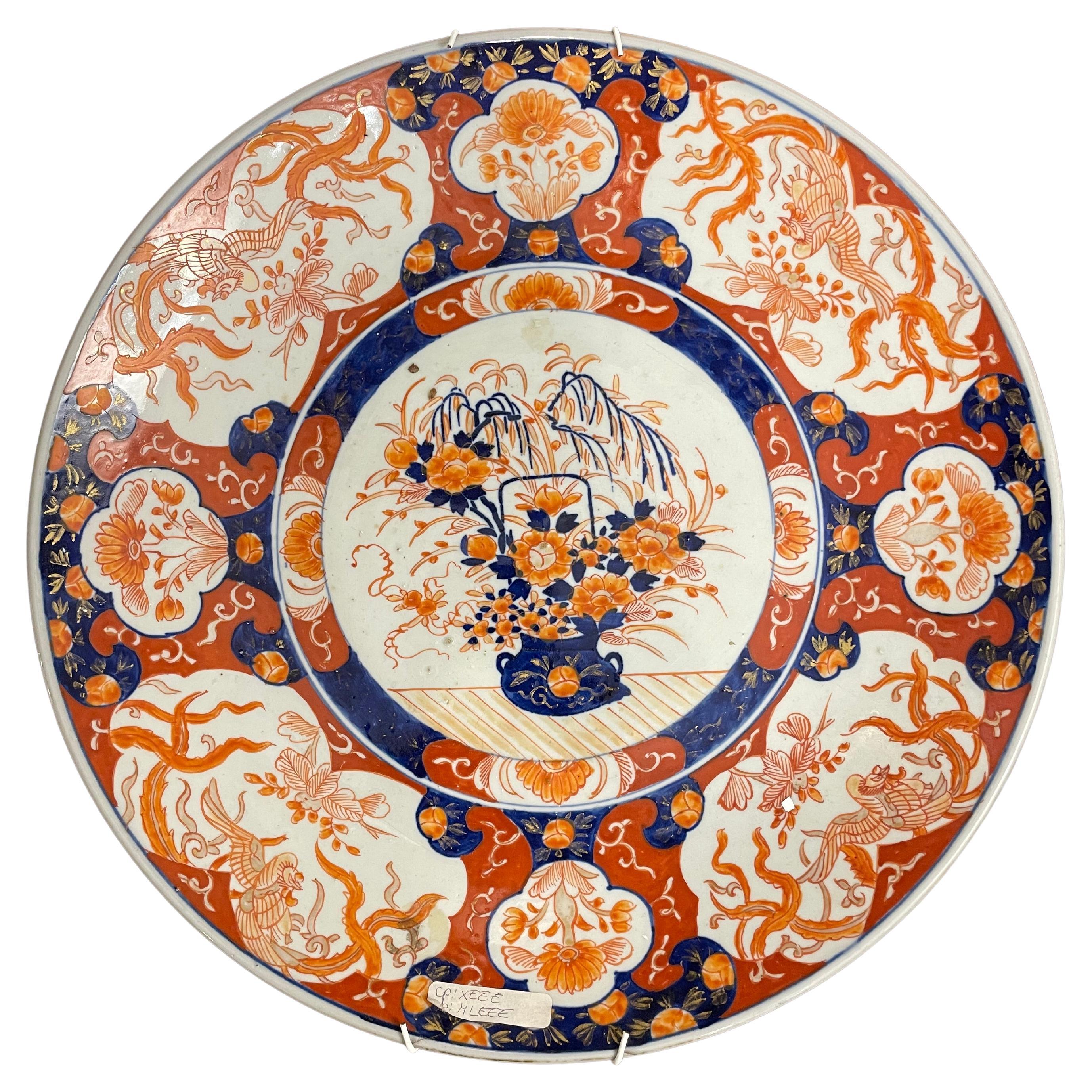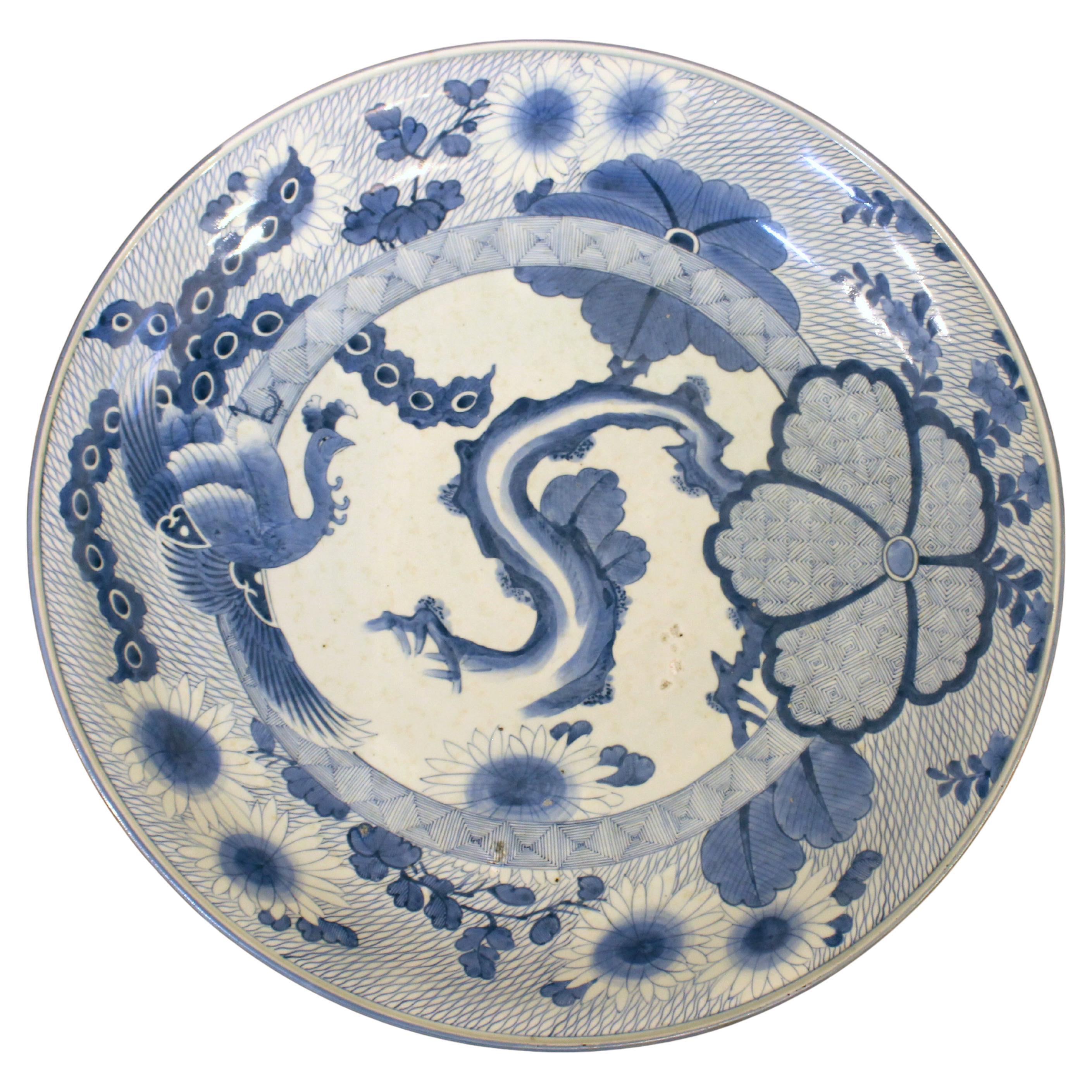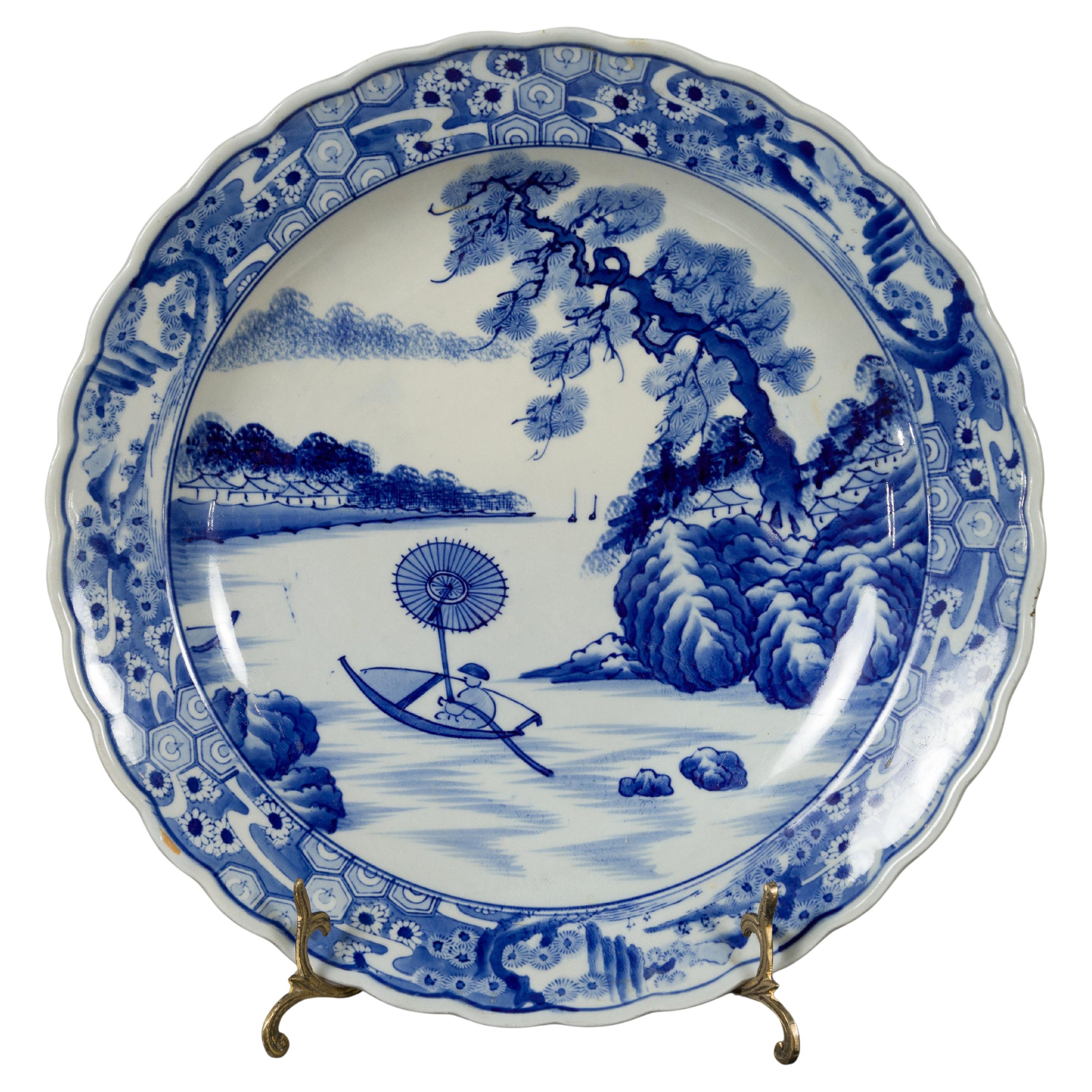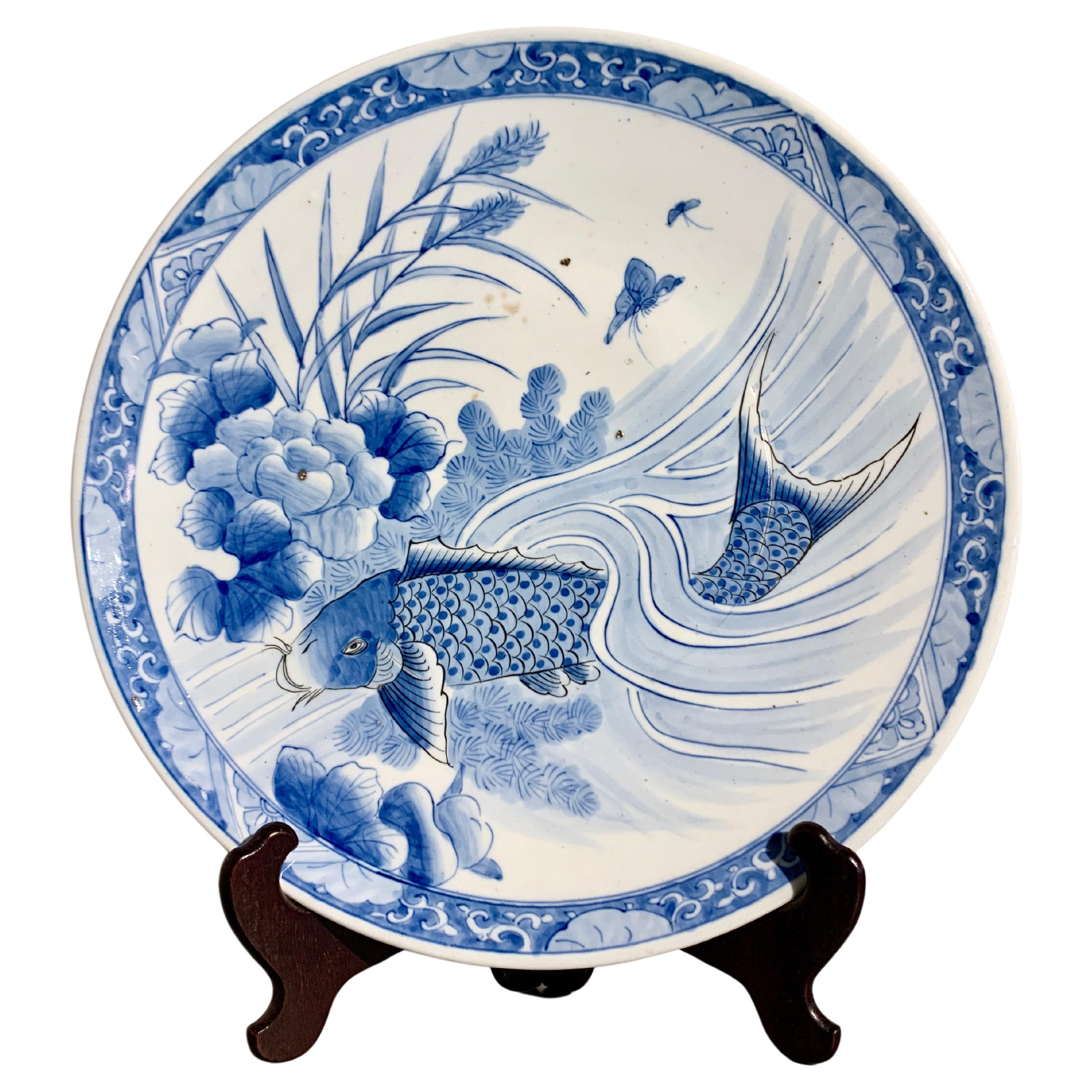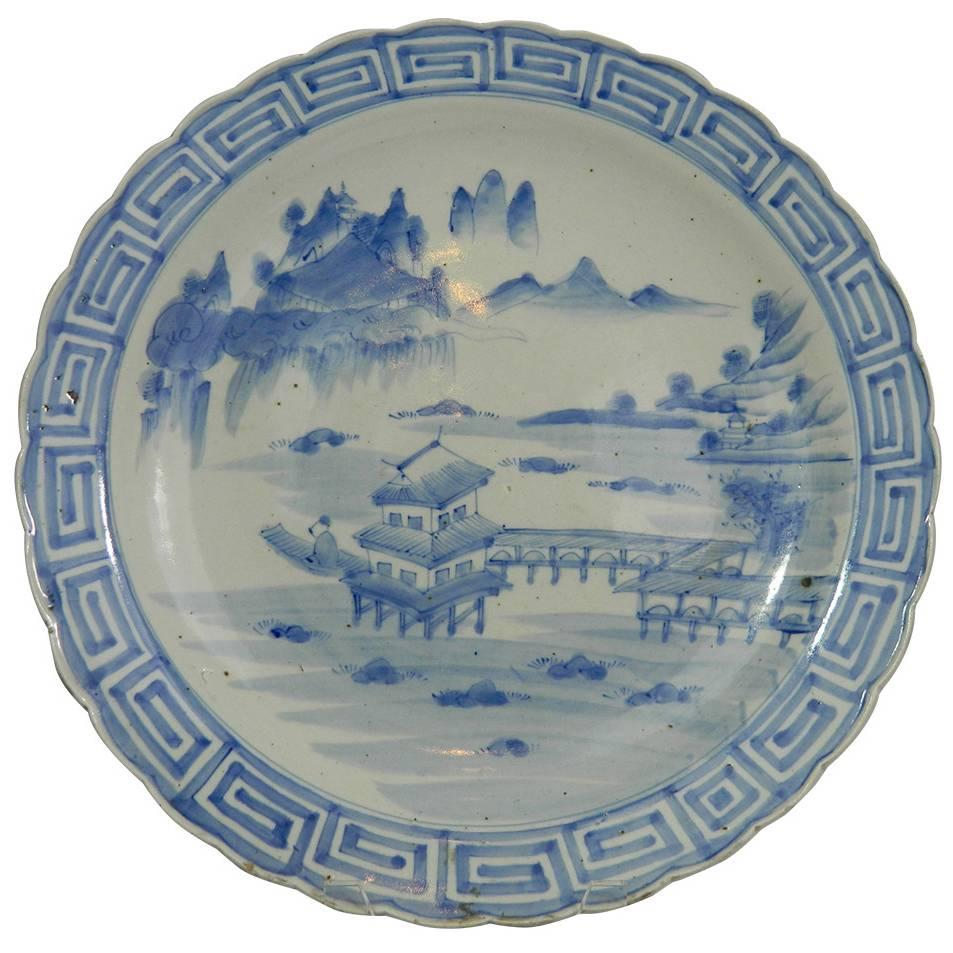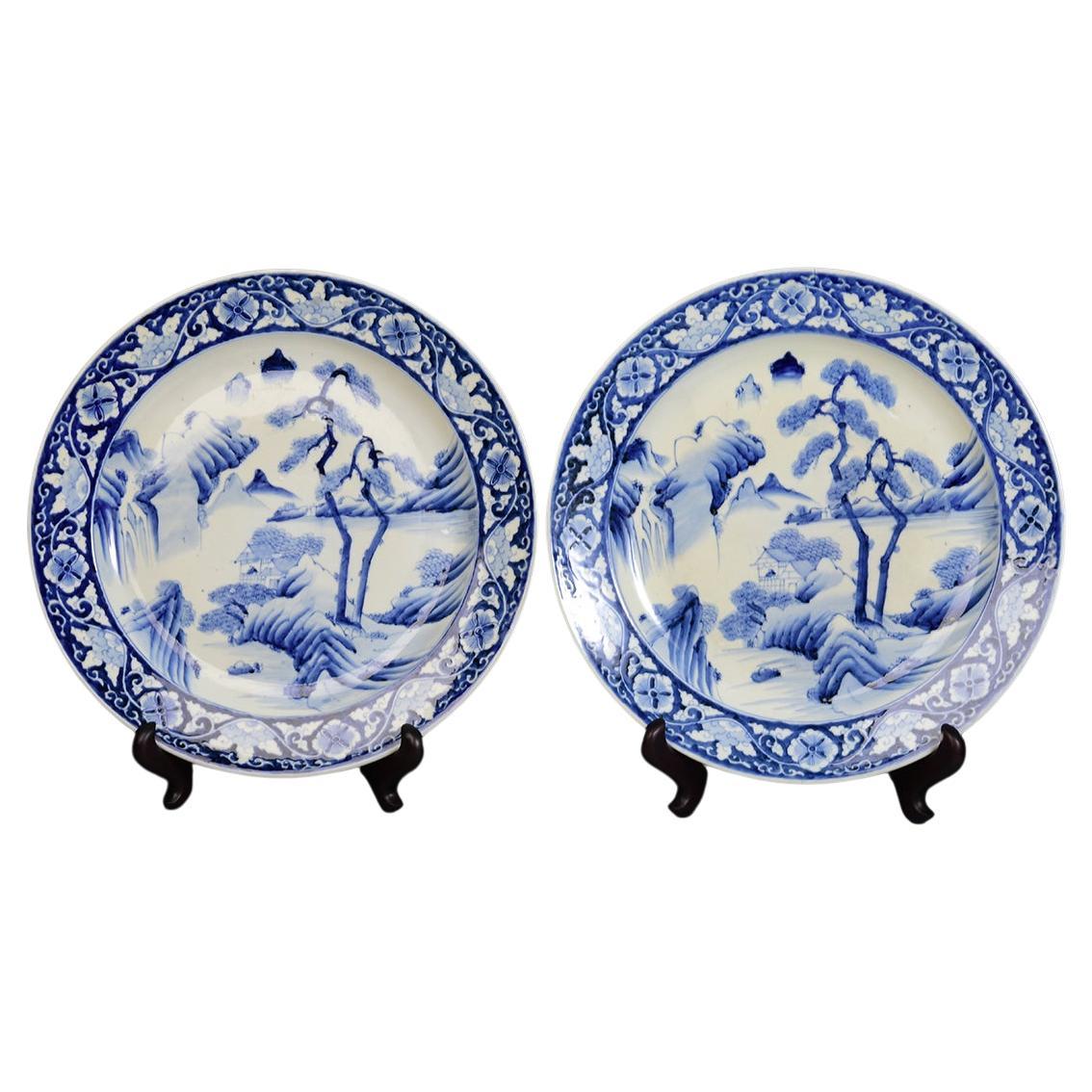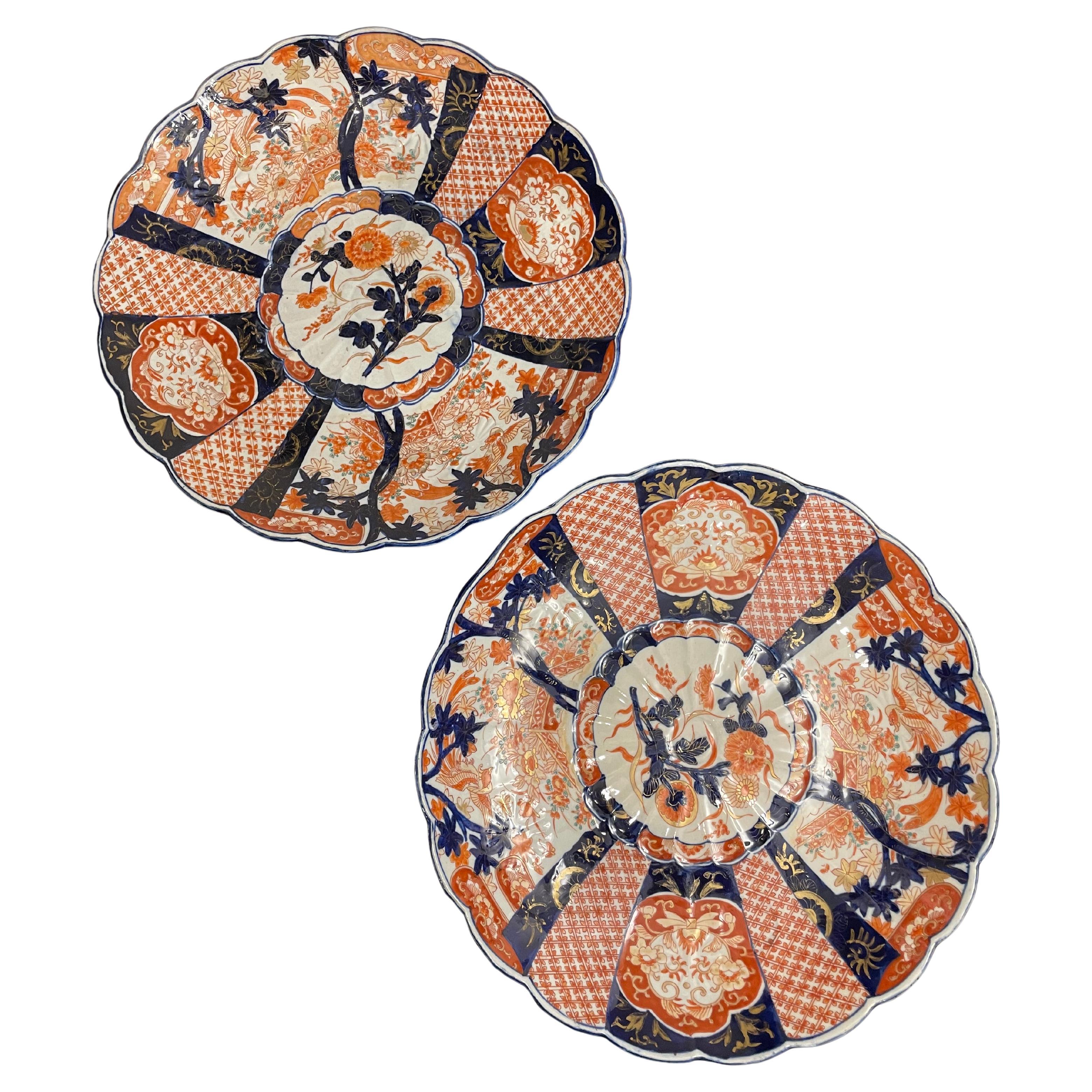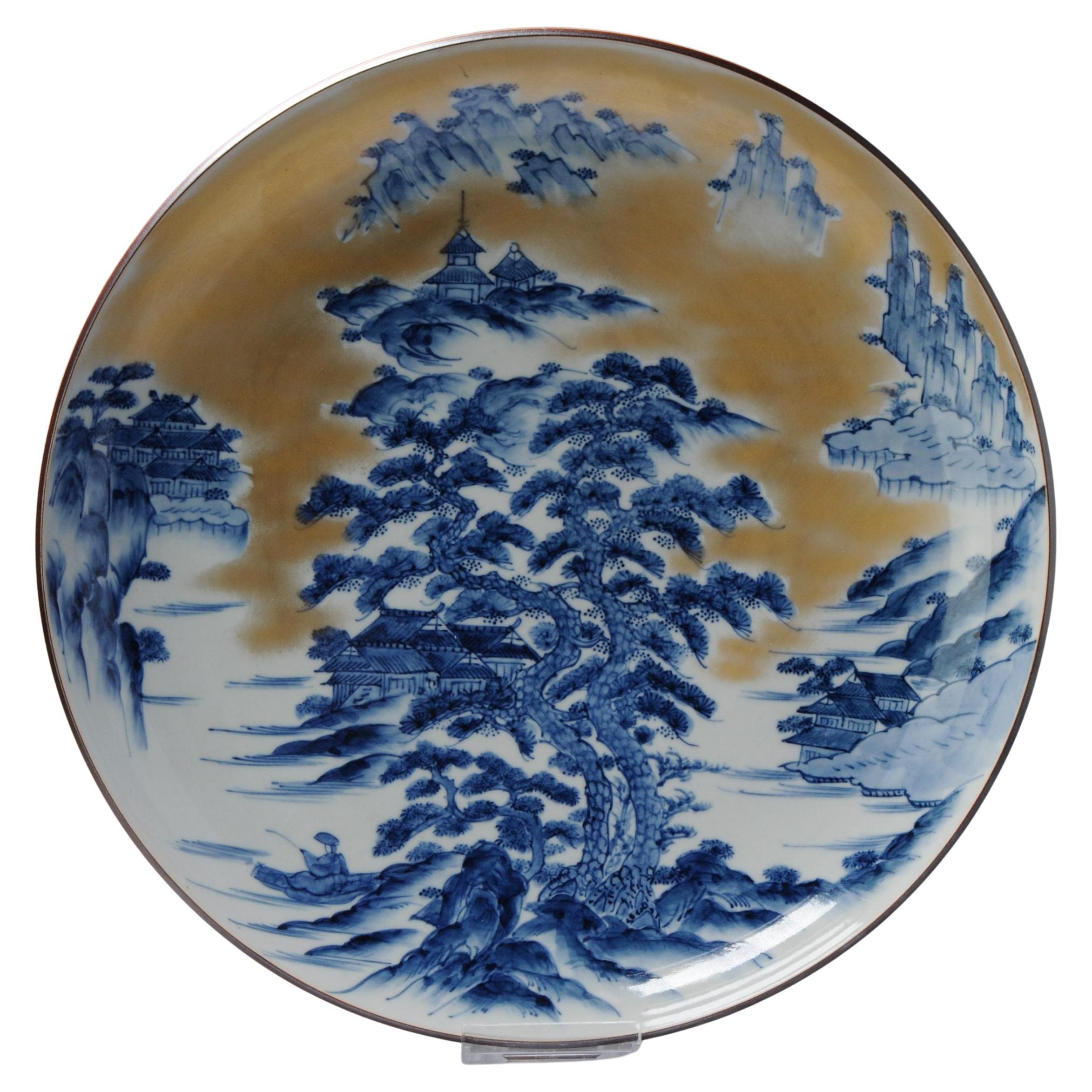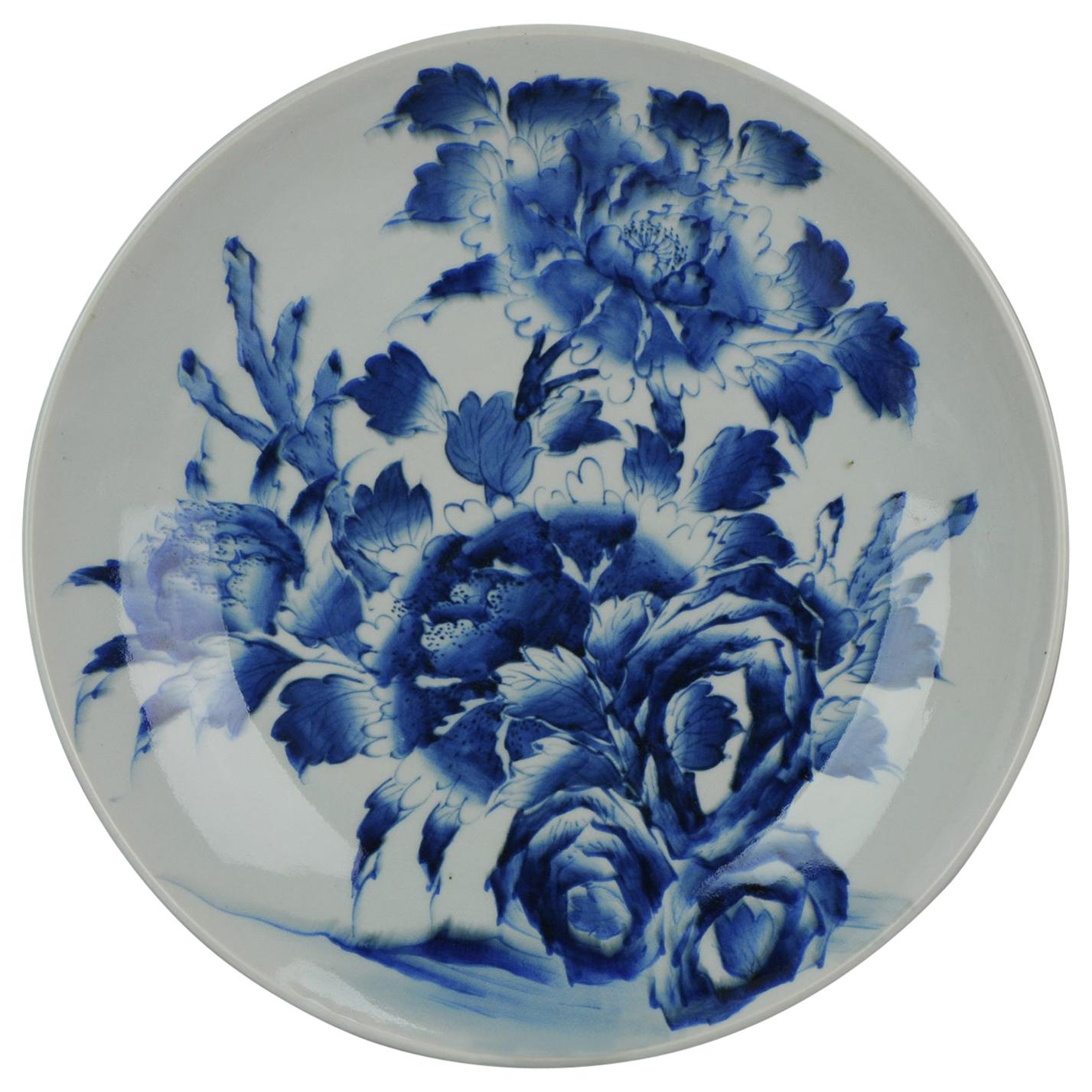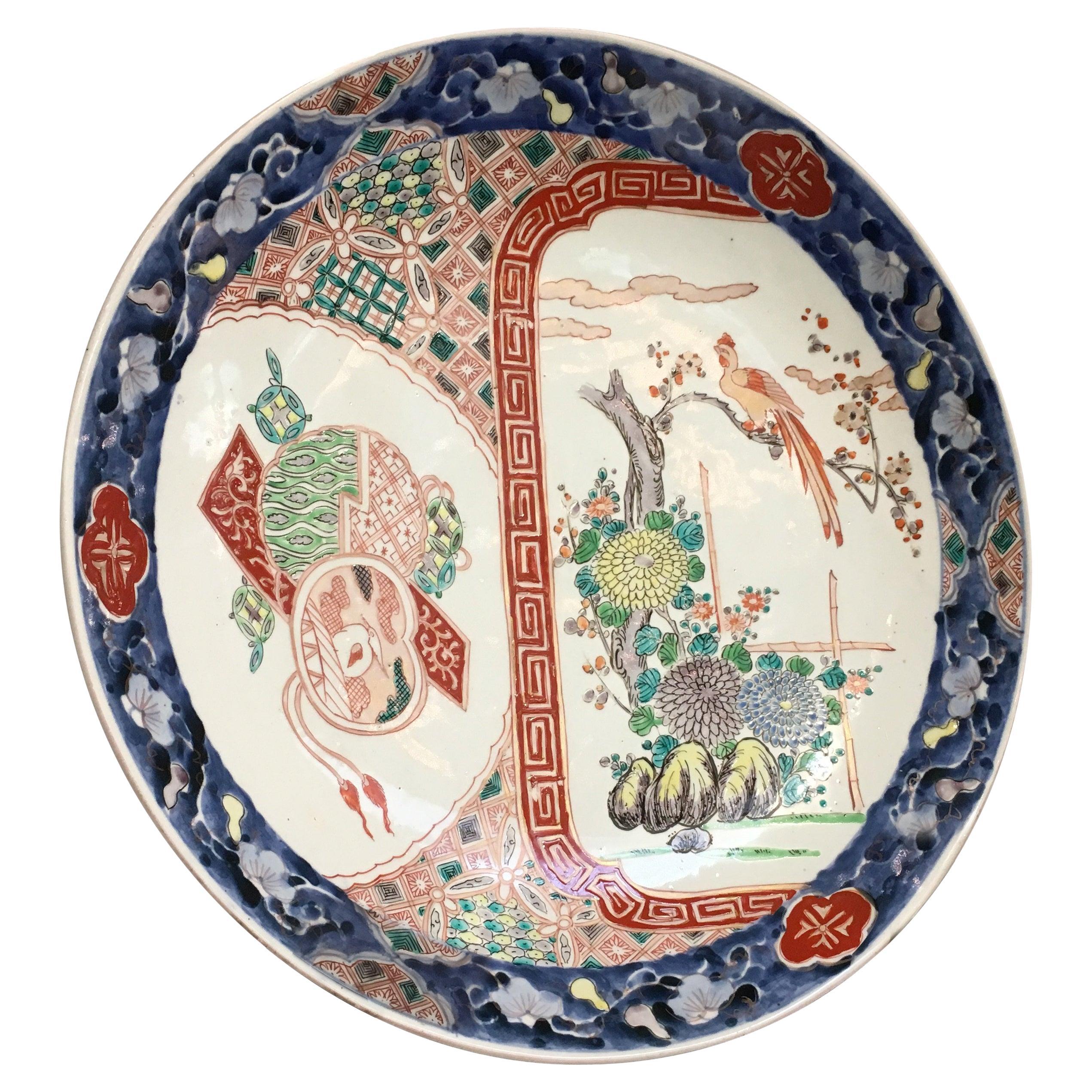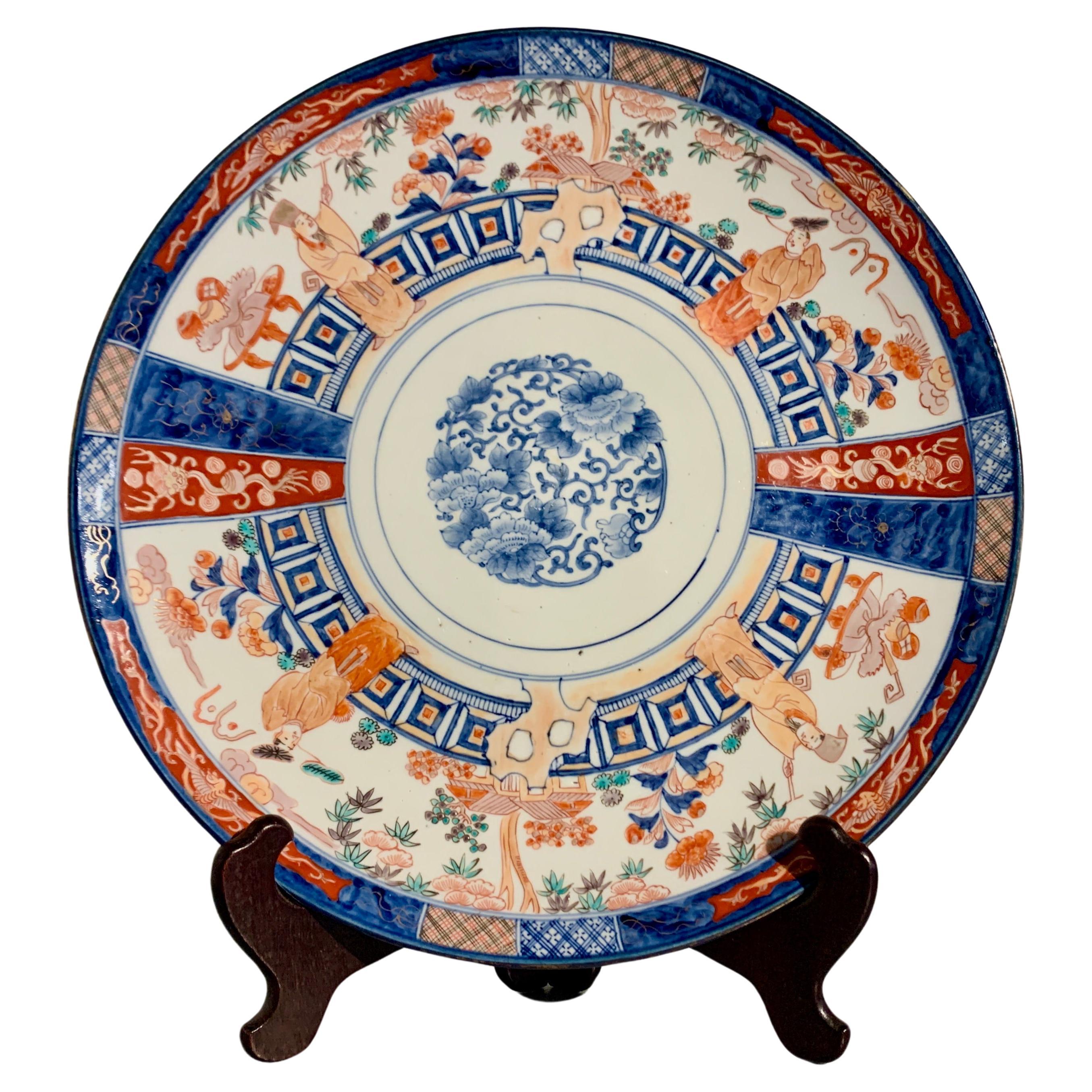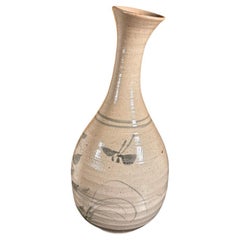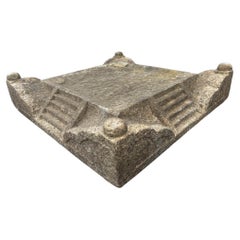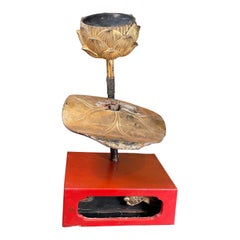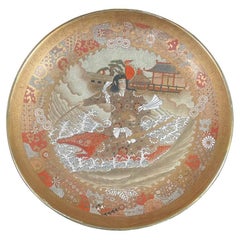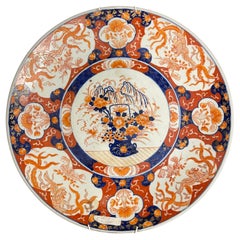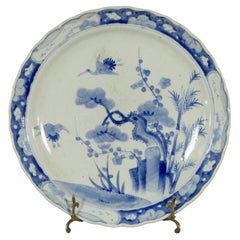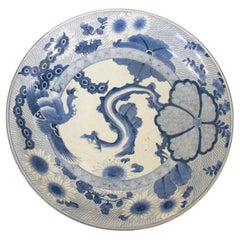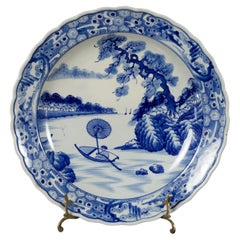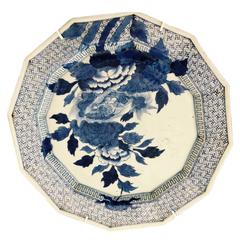
Japanese Blue and White Charger Peonies, 19th Century
View Similar Items
Want more images or videos?
Request additional images or videos from the seller
1 of 9
Japanese Blue and White Charger Peonies, 19th Century
Price:$325
$390List Price
About the Item
- Dimensions:Height: 1.75 in (4.45 cm)Width: 16 in (40.64 cm)Depth: 16 in (40.64 cm)
- Materials and Techniques:Porcelain,Glazed
- Place of Origin:
- Period:
- Date of Manufacture:19th Century
- Condition:Wear consistent with age and use. Minor losses. Minor fading.
- Seller Location:South Burlington, VT
- Reference Number:1stDibs: LU128924411173
About the Seller
5.0
Platinum Seller
Premium sellers with a 4.7+ rating and 24-hour response times
Established in 1990
1stDibs seller since 2015
2,390 sales on 1stDibs
Typical response time: 1 hour
Authenticity Guarantee
In the unlikely event there’s an issue with an item’s authenticity, contact us within 1 year for a full refund. DetailsMoney-Back Guarantee
If your item is not as described, is damaged in transit, or does not arrive, contact us within 7 days for a full refund. Details24-Hour Cancellation
You have a 24-hour grace period in which to reconsider your purchase, with no questions asked.Vetted Professional Sellers
Our world-class sellers must adhere to strict standards for service and quality, maintaining the integrity of our listings.Price-Match Guarantee
If you find that a seller listed the same item for a lower price elsewhere, we’ll match it.Trusted Global Delivery
Our best-in-class carrier network provides specialized shipping options worldwide, including custom delivery.More From This Seller
View AllExtraordinary Japanese Hand Thrown Blue And White Wabi-Sabi Vase, Early 19thc.
Located in South Burlington, VT
A recent find: an old Japanese SHOKI-IMARI blue-and-white porcelain ware bottle
with unique hand painted designs called Kusabana-Chou-Monyou (Grass, flower, and butterfly patterns)...
Category
Antique Early 19th Century Japanese Edo Ceramics
Materials
Pottery
$312 Sale Price
53% Off
Japan Rare Large Antique Hand Carved Stone Altar Display Base, 19th Century
Located in South Burlington, VT
From Japan comes this seldom found , one of a kind large granite stone display base featuring four sets of altar steps- an impressive and spiritually significant object for displayin...
Category
Antique 19th Century Japanese Meiji Sculptures and Carvings
Materials
Limestone
$1,440 Sale Price
48% Off
Japanese Fine Antique Gilt and Red Lacquer Lotus Bud Flower, Edo Period 19th C
Located in South Burlington, VT
From our recent Japanese acquisitions, a rare find
Antique Original Japanese temple "blossoming lotus" flower bud stem including its original red lacquer display base. This finely hand carved wood and lacquered gold flower stem was made for a Buddhist 19th century temple altar. Its flower blossoms and leaves symbolize the stages of the path toward enlightenment. The individual parts of each lotus is carved separately then joined in an arrangement and inserted in altar vessels.
Also called "Jyôka" , it is placed on or next to an altar in a Buddhist temple. Made with meticulous techniques. In Buddhism, the lotus is an important symbol of divine enlightenment because it blooms into beautiful flowers while growing in mud. Tsunehana means "a flower that continues to bloom forever" and "a flower that does not wither." For this reason, the flowers represented are in different stages of their life, unfolded lotus leaves, buds and full flowers, thus symbolizing the journey towards Buddhist enlightenment.
This lovely Japanese antique gilt Lotus flower is an early survivor, circa 1840, and a hard to find treasure that was originally placed on or around a temple altar.
This ensemble consists of a single stem, the top most flower, and the bottom leaf- all mounted in the original square red lacquer display base. A gold gilt 3.5 inch long tortoise "minogame" is affixed to the base as seen in the photo.
Its attractive original old patina coupled with much of the original gilding remaining present is just the way we like to find them.
Dimensions: With original red lacquer display stand Height, 17 inches height and 9 inches in width. The lotus flower stem alone measures 16 inches in height.
Provenance: acquired from a Kyoto Japanse monk and collector
History of the Japanese turtle "minogame"
One of the most famous is the mythological giant turtle...
Category
Antique 1840s Japanese Edo Sculptures and Carvings
Materials
Wood
$300 Sale Price
68% Off
Japanese Huge Antique Captain Whale Fisherman Satsuma Charger, 18 Inches & Box
Located in South Burlington, VT
Japanese Satsuma, a fine and monumental 18" Meiji period charger Ozara with rare motif: Captain fisherman and his fish.
Depicting a tale of Urashima Tarō* (see below),
Signed Jyukan pottery by Chinjyu Makoto, in a lovely gold gilt and red detailed hand-painted composition
Age: 1880-1900.
Dimensions: 18 inches diameter and includes owner's signed wooden presentation box, tomobako.
Hand made and hand painted.
Finest quality.
Provenance: Old Southern Japanese collection.
Urashima Tarō (浦島 太郎?) is a Japanese legend about a fisherman who holds a fishing pole and rescues a turtle and is rewarded for this with a visit to Ryūgū-jō, the palace of Ryūjin, the Dragon God, under the sea. He stays there for three days and upon his return to his village, finds himself 300 years in the future.
Finest quality. Largest size. Original collector box tomobako included.
Lifetime guarantee of authenticity: All of our Asian works of art come with our Lifetime Authenticity Guarantee.
We are members of the North American Japanese Garden Association (NAJGA) specializing for ten years now in old and authentic Japanese stone...
Category
Antique 19th Century Japanese Meiji Sculptures and Carvings
Materials
Ceramic
$1,000 Sale Price
88% Off
Japanese Precious "Shikoku" Blue Stone Water Basin Tsukubai Finest Quality
Located in South Burlington, VT
Precious Natural Shikoku - Mesmerizing Blue Stone Basin Tsukubai
Japan, a large, handsome and unique antique natural organic shaped stone water basin planter -tsukubai- created from...
Category
Early 20th Century Japanese Taisho Sculptures and Carvings
Materials
Stone
$6,375 Sale Price
25% Off
Japanese Antique Gourd and Eggplant Vase- Brilliant Colors
Located in South Burlington, VT
Another Gem
Japan, a fine substantial 11" tall antique monumental green and blue gourd shaped vase with unusual blue egg plant decoration glazed in rich deep green, blue, and brown colored crackled drip glazes.
It was crafted by the master artisans of the Japanese southern Awaji Kiln, from the late Meiji to Taisho period (1910s-1920s).
The impressive porcelain vase crafted in a classic wabi sabi modernist form with an original multi glazed finish. It is unsigned as many normally were from that period and is in original condition with normal kiln origination surface creation imperfections on bottom.
Dimensions: 11 inches tall and 5.5 inches diameter..
Provenance: private north west coast collection.
Undoubtedly influenced by the modernist movement and more likely by the visit to the Awaji kilns by the noted English designer Christopher Dresser of Linthorpe Art Pottery...
Category
Early 20th Century Japanese Taisho Sculptures and Carvings
Materials
Ceramic, Pottery
$160 Sale Price
86% Off
You May Also Like
A Japanese Imari Charger, 19th Century
Located in ARMADALE, VIC
A Japanese Imari Charger, 19th Century
Provenance: Private Australian Collection.
Description:
The central floral basket motif within a border of hou-ou bird cartouches to a cobalt...
Category
Antique 19th Century Japanese Ceramics
Materials
Porcelain
19th Century Japanese Hand-Painted Blue and White Porcelain Charger Plate
Located in Yonkers, NY
A Japanese porcelain charger plate from the 19th century, with hand-painted blue and white blooming tree, rocky formation and bird décor. Created in Japan during the 19th century, th...
Category
Antique 19th Century Japanese Porcelain
Materials
Porcelain
Late 19th Century Japanese Massive Scale Arita Blue & White Charger
Located in Chapel Hill, NC
Late 19th century massive scale Arita blue & white charger, Japanese. Pseudo Chinese reign marks. Also called blue & white Imari, as Imari was the export po...
Category
Antique Late 19th Century Japanese Ceramics
Materials
Ceramic, Porcelain
Japanese 19th Century Porcelain Imari Charger with Painted Blue and White Décor
Located in Yonkers, NY
A Japanese Imari porcelain charger plate from the 19th century, with hand-painted blue and white décor depicting a man rowing a boat. Created in J...
Category
Antique 19th Century Japanese Ceramics
Materials
Porcelain
Large Japanese Blue and White Arita Porcelain Charger, Edo Period, 19th C, Japan
Located in Austin, TX
A large Japanese blue and white decorated Arita porcelain charger, Edo Period, early 19th century, Japan.
The large and shallow blue and white Arita porcelain charger measures 18 ...
Category
Antique Early 19th Century Japanese Edo Ceramics
Materials
Porcelain
19th Century Large Japanese Arita Charger
Located in Savannah, GA
19th century large Japanese Arita charger, the wide scalped-edge with key fret band framing the under glaze blue painted landscape with a lakeside viewin...
Category
Antique 19th Century Japanese Ceramics
Materials
Porcelain
Recently Viewed
View AllMore Ways To Browse
Large Antique Japanese Chargers
Blue And White Imari Charger
Japanese Porcelain Tray
Imari Charger Plates
Kutani Plate
Satsuma Plate
Japanese Imari Charger Plate
Japanese Woodblock Print Blue
17th Century American Table
Antique Satsuma Plate
Japanese Satsuma Porcelain Plates
Kutani Charger
Japanese Garden Antiques
American Satsuma
Satsuma Kutani
Large Kutani Plates
Satsuma Charger
Imari Tray
